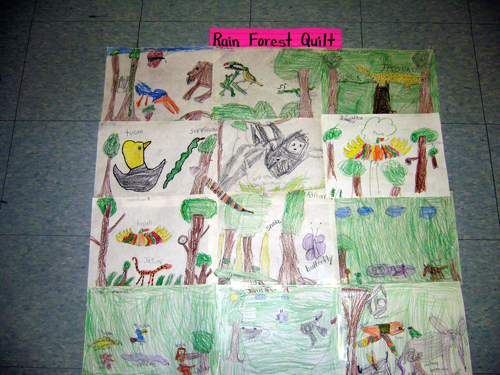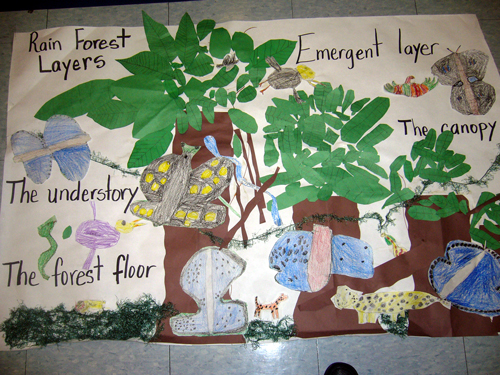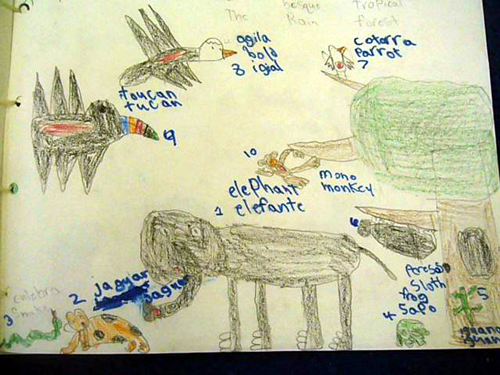Rain Forest Adventures
| Name: |
Artemisa Pichardo |
| School: |
P. S. 35X |
| Address: |
261 E 163 rd Street |
| City: |
Bronx, NY, 10451 |
| Original Project: |
Rain Forest Adventures |
| Author: |
Alice Hom |
| URL: |
http://teachersnetwork.org/IMSL/ps6/rainfunit.htm |
How did you modify this unit for use in your own classroom?: I conducted activities such as read aloud books, a video and I provideD the students with prior knowledge about the rain forest. We made a list of animals that live in the rain forest. We discussed the different resources that we can get from the rain forest, such as food and medicine as well. We also discussed the benefits of the rain forest to the planet.
List your primary instructional objectives for your students.
| |
Identify animals that live in the rain forest. |
| |
Learn about the four layers of the rain forest. |
| |
Identify different food products that come from the rain forest. |
| |
Discuss the benefits that the rain forest to mankind. |
What role did technology play in this curriculum unit?: I used a video from the Magic School Bus series on rain forest sas well as one from the website www.nature.org/rainforest/explore/video to complement the read aloud books.
How did you assess and evaluate student performance?: Observation of students as they completed their posters. Review of posters drawn by students for evidence of proper context in their writings and drawing. Observation of how well they were able to share information as they were constructing their posters.
Please tell us briefly about your background & teaching experience: Ms. Artemisa taught ELL students in first grade for twelve years. She has Baccalaureate and Masters degrees in Bilingual Education.
What are your recommendations for other teachers interested in adapting this unit?: First grade students require significant prior exposure to the material to learn about rain forests. I found that the activities that provided prior knowledge were essential in student success in this unit.
(none)
Samples of Student Projects
| |
A rainforest quilt was constructed with contributed posters from some students. |
| |
 |
| |
|
| |
A class mural was put together to identify the layers of the rainforest. Each student contributed a drawing to the mural. |
| |
 |
| |
|
| |
A bilingual reference book was created. Each student was required to draw and label in English and Spanish ten animals from the rain forest for a page in the book. A book was compiled from the contributions from all of the students. |
| |
 |
|